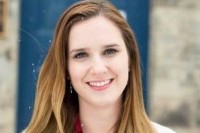 By Tamsyn Riddle, Student Co-Lead, Access for Every Student Domain
By Tamsyn Riddle, Student Co-Lead, Access for Every Student Domain
When the word “innovation” comes up, it usually refers to technological changes that make life more convenient: computers, smart phones, driverless cars. In equity-related classes, we often talk about the inequalities between the people who can afford such new innovations and the majority of the world, and we criticize innovation for focusing too much on capitalist notions of efficiency.


